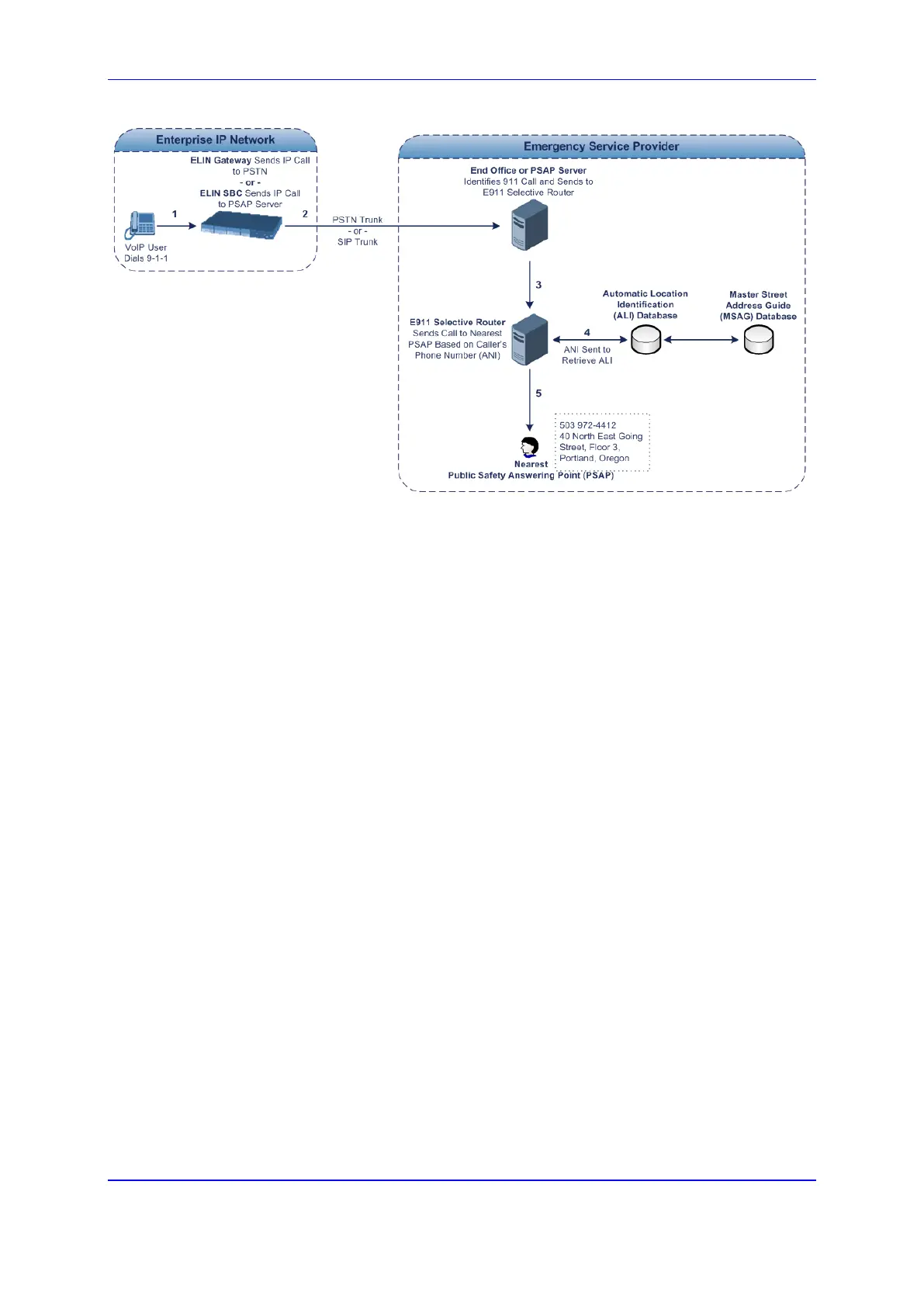Version 7.2 281 Mediant 1000B Gateway & E-SBC
User's Manual 15. Services
1. The VoIP user dials 9-1-1.
2. AudioCodes' ELIN device eventually sends the call to the emergency service provider
over the PSTN or SIP Trunk (PSAP server).
3. The emergency service provider identifies the call is an emergency call and sends it to
an E9-1-1 Selective Router in the Emergency Services provider's network.
4. The E9-1-1 Selective Router determines the geographical location of the caller by
requesting this information from an Automatic Location Identification (ALI) database
based on the phone number or Automatic Number Identifier (ANI) of the 911 caller.
Exact location information is also supplied by the Master Street Address Guide
(MSAG) database, which is a companion database to the ALI database. Phone
companies and public safety agencies collaborate beforehand to create master maps
that match phone numbers, addresses and cross streets to their corresponding PSAP.
This MSAG is the official record of valid streets (with exact spelling), street number
ranges, and other address elements with which the service providers are required to
update their ALI databases.
5. The E9-1-1 Selective Router sends the call to the appropriate PSAP based on the
retrieved location information from the ALI.
6. The PSAP operator dispatches the relevant emergency services to the E9-1-1 caller.
15.7.2 Microsoft Skype for Business and E9-1-1
Microsoft Skype for Business enables Enterprise voice users to access its unified
communications platform from virtually anywhere and through many different devices. This,
together with a deployed MLTS, poses a challenge for E9-1-1 due to the difficulty in
accurately locating the E9-1-1 caller. However, Skype for Business offers an innovative
solution to solving Enterprises E9-1-1 location problems.
15.7.2.1 Gathering Location Information of Skype for Business Clients for 911
Calls
When a Microsoft® Skype for Business client is enabled for E9-1-1, the location data that is
stored on the client is sent during an emergency call. This stored location information is
acquired automatically from the Microsoft Location Information Server (LIS). The LIS stores

